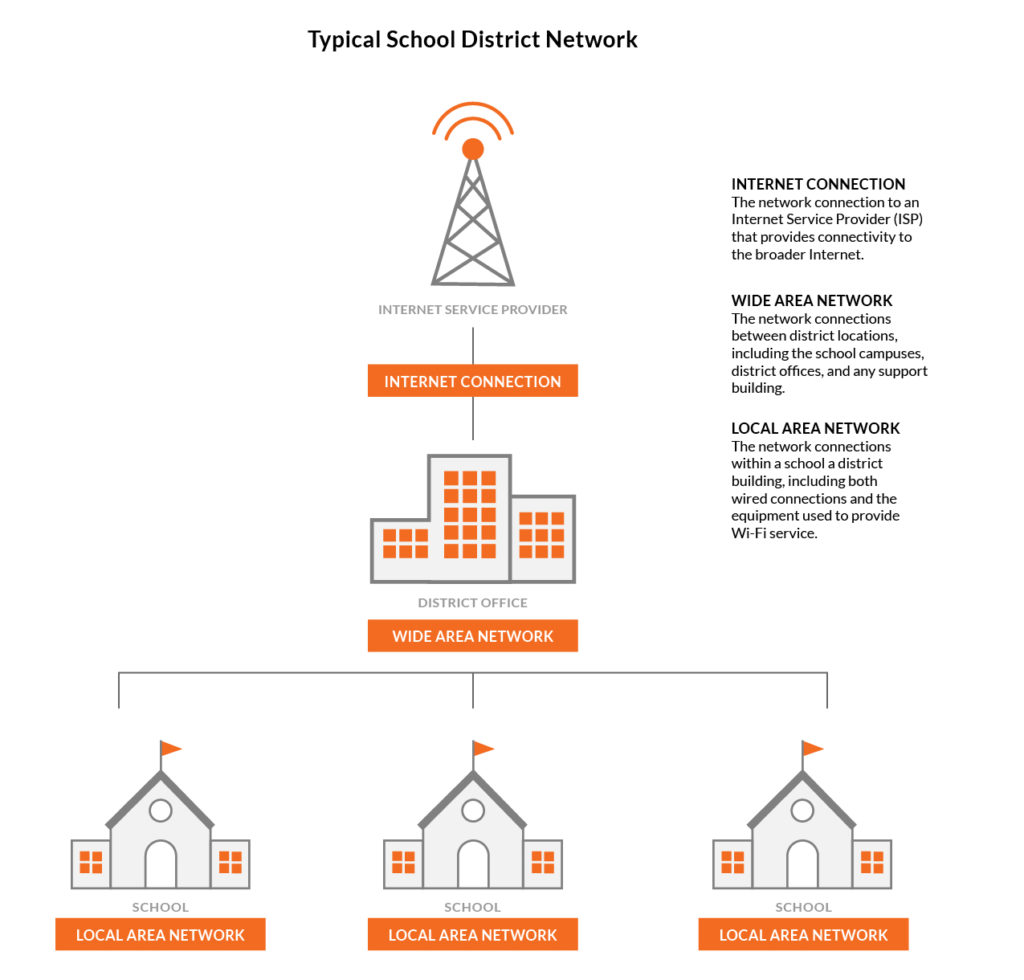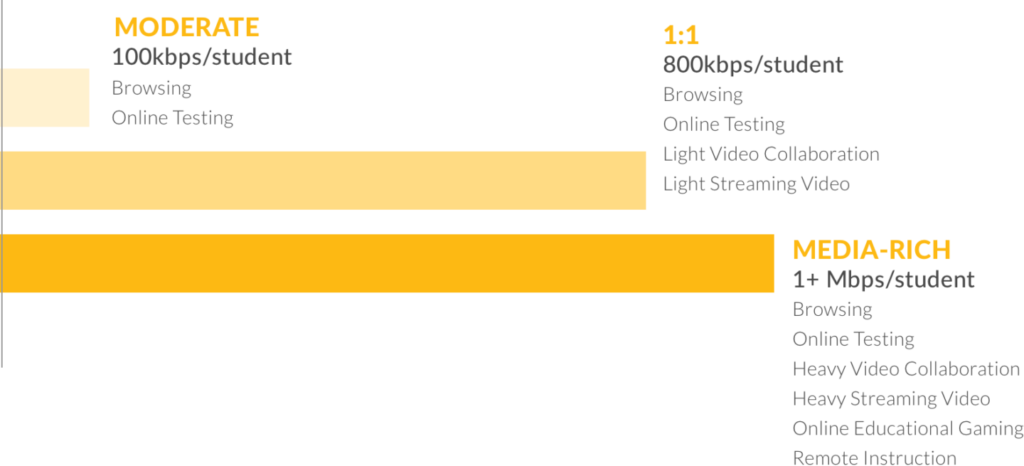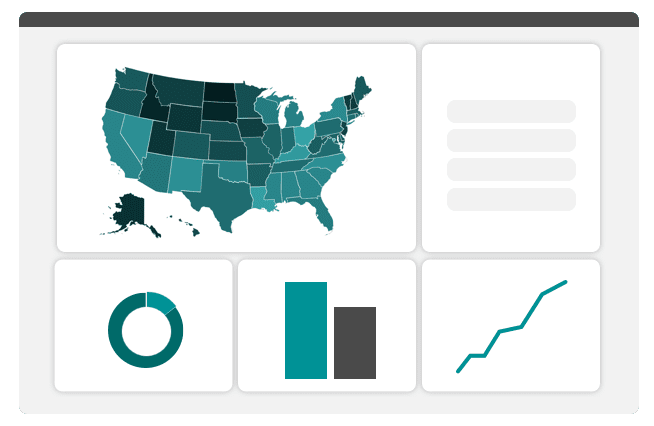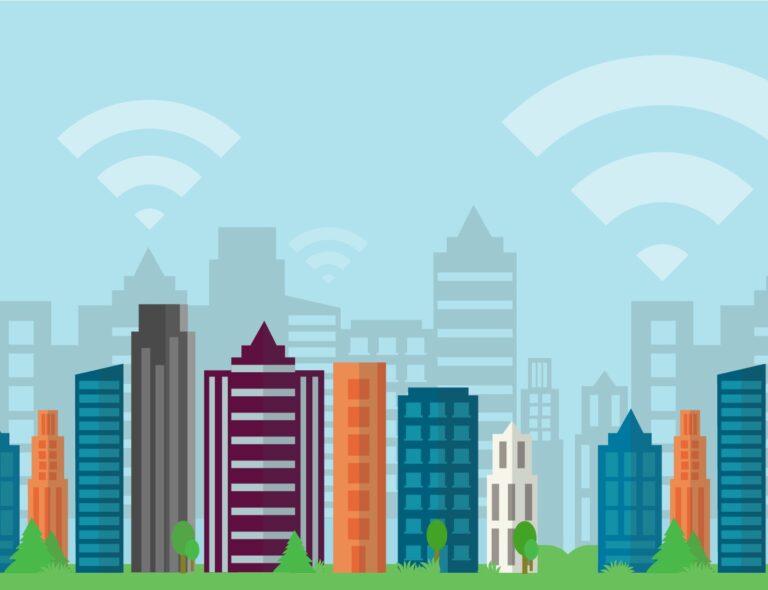School Network Structure
With a good grasp of the fundamentals of a district’s network setup, school board members will be better prepared to communicate with their superintendent and tech leaders.
The diagram below provides a high-level overview of a basic district network:

How Much Bandwidth Should Your School Board Plan for?
As you consider your funding plan, think of bandwidth as the amount of data that can be delivered to each student. For example, today, students need a minimum of 100 kbps of Internet bandwidth—the FCC has anticipated that by 2018, 1 Mbps per student will be the minimum recommended bandwidth for digital learning.
Your upgrade plan should include an estimate of your bandwidth needs for two to three years, as well as options for increasing bandwidth within that timeframe, if necessary. It is important to keep in mind that according to our network experts, the demand for bandwidth is growing at approximately 50% every year.
In a school environment, the two main drivers of how much network bandwidth you need are:
1. The number of devices like tablets, laptops, and smartphones your network is supporting.
a.) To address this, take a tally of the number of devices that will access your network on a regular basis. Bear in mind that if your district has a Bring Your Own Device (“BYOD”) policy or a guest network, many students, teachers, and visitors will bring one or more devices of their own to your network.
2. How often these devices will be used.
a.) This is a direct reflection of your district’s learning goals. The chart below outlines three general usage scenarios and the bandwidth necessary to support each of the various digital learning environments.

While there are other factors that may affect the amount of bandwidth your district needs—cloud-based applications, storage, online assessments, etc.—having enough bandwidth to support your district’s in-classroom goals is the foundation for helping your fellow school board members plan your network upgrade.
How to Fund Network Upgrades
After gaining a better understanding of a typical district’s network infrastructure, it is critical determine the amount of bandwidth needed to support your district’s learning goals, and how you can get that amount of bandwidth affordably. Here are three key funding sources that can help:
- The FCC’s federal E-rate program provides public schools and libraries with funding for Internet services. Through an annual application process, school districts can request funding for the infrastructure and implementation of broadband and Wi-Fi.
- Many states offer matching funds, through which school districts can increase their savings considerably. When a state provides funding for school broadband construction, the E-rate program can provide up to an additional 10% in funding to that school district.
- One of the greatest benefits of the E-rate’s 2014 modernization was the inclusion of billions of dollars in Category 2 funding, which covers the costs of Wi-Fi implementation. The funds amount to $150 per student, and many states still have millions of unspent Wi-Fi dollars.
To calculate your costs, you can use free tools like Compare & Connect K-12 to see how much similar districts are paying for their broadband and Wi-Fi access. Leveraging price transparency is critical, because it will enable you to stand on firm footing when you are searching for a service provider and, eventually, negotiating the terms of your contract.
For more guidance, view your district’s connectivity details on Compare & Connect K-12.






